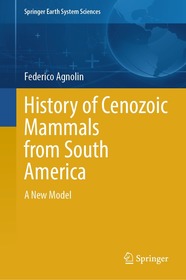
History of Cenozoic Mammals from South America
A New Model
Sorozatcím: Springer Earth System Sciences;
-
20% KEDVEZMÉNY?
- A kedvezmény csak az 'Értesítés a kedvenc témákról' hírlevelünk címzettjeinek rendeléseire érvényes.
- Kiadói listaár EUR 192.59
-
79 876 Ft (76 073 Ft + 5% áfa)
Az ár azért becsült, mert a rendelés pillanatában nem lehet pontosan tudni, hogy a beérkezéskor milyen lesz a forint árfolyama az adott termék eredeti devizájához képest. Ha a forint romlana, kissé többet, ha javulna, kissé kevesebbet kell majd fizetnie.
- Kedvezmény(ek) 20% (cc. 15 975 Ft off)
- Kedvezményes ár 63 901 Ft (60 858 Ft + 5% áfa)
Iratkozzon fel most és részesüljön kedvezőbb árainkból!
Feliratkozom
79 876 Ft

Beszerezhetőség
Megrendelésre a kiadó utánnyomja a könyvet. Rendelhető, de a szokásosnál kicsit lassabban érkezik meg.
Why don't you give exact delivery time?
A beszerzés időigényét az eddigi tapasztalatokra alapozva adjuk meg. Azért becsült, mert a terméket külföldről hozzuk be, így a kiadó kiszolgálásának pillanatnyi gyorsaságától is függ. A megadottnál gyorsabb és lassabb szállítás is elképzelhető, de mindent megteszünk, hogy Ön a lehető leghamarabb jusson hozzá a termékhez.
A termék adatai:
- Kiadás sorszáma 2024
- Kiadó Springer Nature Switzerland
- Megjelenés dátuma 2024. április 24.
- Kötetek száma 1 pieces, Book
- ISBN 9783031562655
- Kötéstípus Keménykötés
- Terjedelem318 oldal
- Méret 235x155 mm
- Nyelv angol
- Illusztrációk XX, 318 p. 90 illus., 58 illus. in color. Illustrations, black & white 556
Kategóriák
Hosszú leírás:
Tartalomjegyzék:
Introduction.- Brief History of South American Biogeography.- Short summary on main Cenozoic Fossiliferous Localities and South American Land Mammal Ages.- Major clades of South American Mammals.- Spendid Isolation Revisited: The Entente Cordiale Model.
Több



